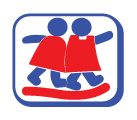How Can Dance Help Your Child?
All parents know that exercise is crucial for their child’s development. They make time to take their kids on walks, help them learn to enjoy the world around them, and teach them about sports and other fun athletic activities.
Any physical activity you can get your child involved in is great, but in this blog, we’ll talk specifically about dance. Young kids need more than just general exercise to develop normally—they need to participate in activities that channel their energy, help them develop motor skills, and teach them to work both individually and in groups. Dance is the perfect way to accomplish these three things.
Read our blog below to learn more about why dancing is so good to kids, plus what you and your daycare facility can do to help your kids learn to love dance.
What Benefits Do Kids Get From Dance?
As with music and language, every culture in the world has a rich dancing history. Before the written word, dance was one of many important ways for cultures to communicate and celebrate.
In fact, dance’s rhythms and movements have always been essential to helping humans relate to the world around them. This rich history makes dance the perfect activity for toddlers and young kids, who are just starting to explore their world.
Of course, kids get specific benefits from any type of sport. For instance, if they participate in soccer, they learn how to play together as a team. So why do so many daycares and elementary schools incorporate dance into their physical education lessons, starting from a very early age?
The answer lies in how many ways dance positively affects childhood development, including in these key ways:
Social Interaction
Some kids are too shy to participate effectively in team sports, while others who love team sports also need to learn to stand on their own two feet. Dance helps kids feel a sense of community while allowing them to focus on individual growth.
Physical Growth
Like most sports, dance teaches kids to develop endurance, coordination, and strength. It also involves the entire body, so it helps kids put some of their endless energy to good use. Plus, dance teaches children to stretch their bodies and learn new movements, which is a key part of physical development.
At the same time, dance helps kids learn to control their bodies. And as they dance, they learn how to interact with their surroundings, which is one reason why some teachers incorporate props like ribbons or balls into dancing activities.
Finally, unlike many other sports, dancing works best alongside music. As your kids listen to music and dance, they learn even more about rhythm and coordination.
Cognitive Growth
It shouldn’t surprise you to learn that your physical health impacts your mental health. The same is true for young kids. As kids work out their wiggles, they can stay more focused on school and on learning important principles.
Dance is a creative medium that combines memorized movements with opportunities for creative interpretations. The creative thinking dance inspires can help your children learn to become more imaginative and learn how to better express themselves.
How can I encourage my child to love dance?
If you have a toddler or young child, chances are high that your child’s daycare instructor will incorporate dance into his or her daily activities. If you’re curious about which dancing activities your child will learn, talk to the instructors. They can fill you in and give you suggestions on how to help your kids continue to practice dancing skills at home.
In the meantime, try a few of these practical suggestions to get your kids moving at home, regardless of what they learn in the classroom:
Play music. Everyone needs a little quiet time sometimes, but when you’re in the car or enjoying some downtime at home, turn on the stereo. Find some vibrant, fun pop songs with a good beat, and dance along with your kids.
Helps kids feel confident in their bodies. If kids feel insecure, they’ll have a harder time enjoying dance time with their classmates. Help your child learn healthy habits. Practice being a positive role model when it comes to body positivity, and watch what you say around kids.
Practice other motor skills. If you have a young child, he or she is developing motor skills and coordination that will last for his or her entire life. Support your child’s development in dance with other activities, like walking or running, that can build strength and endurance. Activities as simple as playing with building blocks or cutting and pasting can also build fine motor skills.
Practice developing creativity. Your child’s creativity in dance should extend to other aspects of his or her life. Help your kids feel more expressive and creative by participating in drawing, storytelling, and other imagination-based activities. Don’t curtail your child’s creativity; instead, give praise and positive feedback.
To learn more about how kids can benefit from dance, get in touch with your child’s daycare instructor. And to learn more about childhood development, check out the rest of our blog posts.


